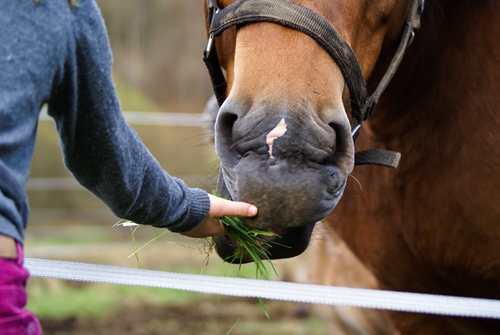Equestrian therapy is a great mental health option for many people, but it is not a job that suits all horses. The Certified Therapy Horse Association stresses that these animals are professionals, so they need the attitude to match. A good therapy horse has discipline, a calm temperament and is physically able to move with patients.
Many competing owners try to donate their retired horses only to find their trusted companion is not suitable for therapy, Horse Channel said. While treatment centers would love to be able to take every equine that comes their way, many are just not suited for the task. This does not always mean the horse is too rowdy – even some of the most even-tempered animals don’t have what it takes.
“There’s no such thing as the perfect therapy horse.”
Traits for therapy horses
There is no such thing as the perfect therapy horse simply because there are so many different forms of therapy. It is impossible for one horse to meet every single qualification. Plus, two centers treating the same illness can have their own individual specifications. Still, the Professional Association of Therapeutic Horsemanship International detailed a few guidelines to help treatment centers in their search and let owners know if their equine is a suitable candidate.
Therapy horses can be any breed, although Horse Channel mentions that certain ones tend to be better suited than others. Quarter horses, for example, are a nice, average size and have an even temperament. A good therapy horse is not easily spooked and can be handled by several different people without reacting. In addition, a therapy horse needs to respond readily to direct input. If not, patients will be unable to associate their words and actions with a specific outcome and therefore will not understand the cause and effect of their actions.
Most therapy horses are 8 to 16 years old, although some are in their 20’s. All horses should be in good health, as many treatment centers simply do not have the resources to nurse a sick horse.
“All therapy horses should at least be able to walk, trot, and canter clearly.”
In terms of gait, all therapy horses should at least be able to walk, trot, and canter clearly. Soundness is crucial for those horses that are ridden in therapy programs, since part of what makes equine treatment so effective is its consistency and the fact that it meets a certain set of standards. Therefore, injured horses might not be the best candidates. Slow ones, however, are generally okay. The horses are not competing for speed, but they do need to be able to move at a consistent tempo.
How horses become therapists
Most therapy horses are donated by their previous owners. Some are former competitors, while others are surrendered by their owners for personal reasons. Sometimes, donating a horse is more advantageous than selling because of the tax benefit.
After the treatment center chooses a horse, staff will spend time with it during a trial period to make sure it’s well-suited for therapy. Previous owners will need to provide the horse’s medical history, including all vaccinations and treatments, before the horse is fully accepted.
Donating your horse to therapy does not mean you’ll never see it again Many facilities recommend prior owners come by to visit their donated horses whenever they can.









